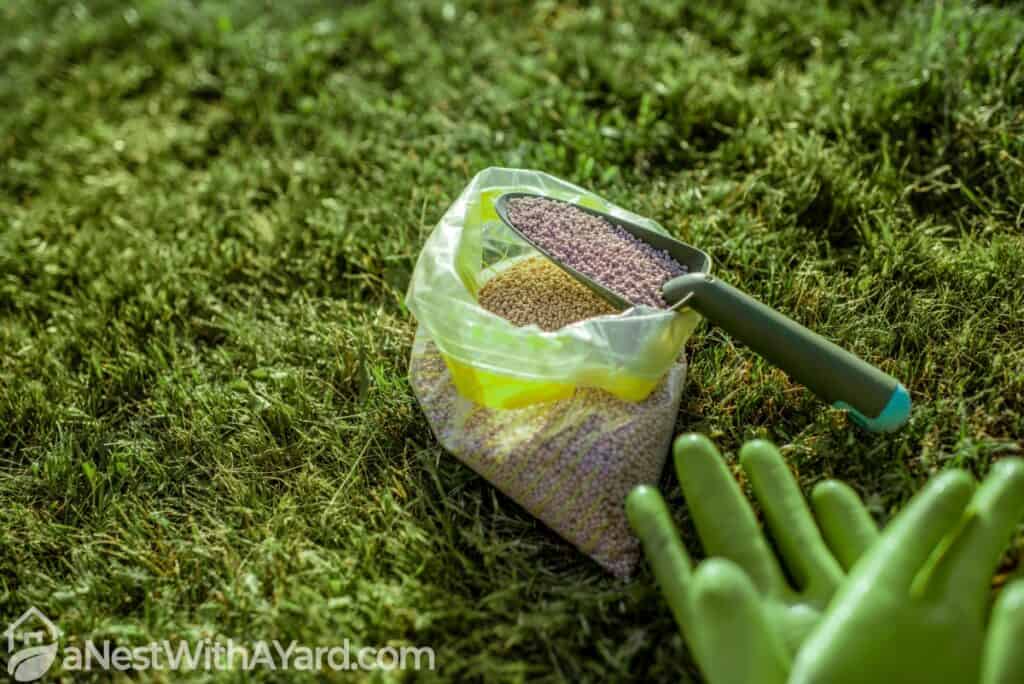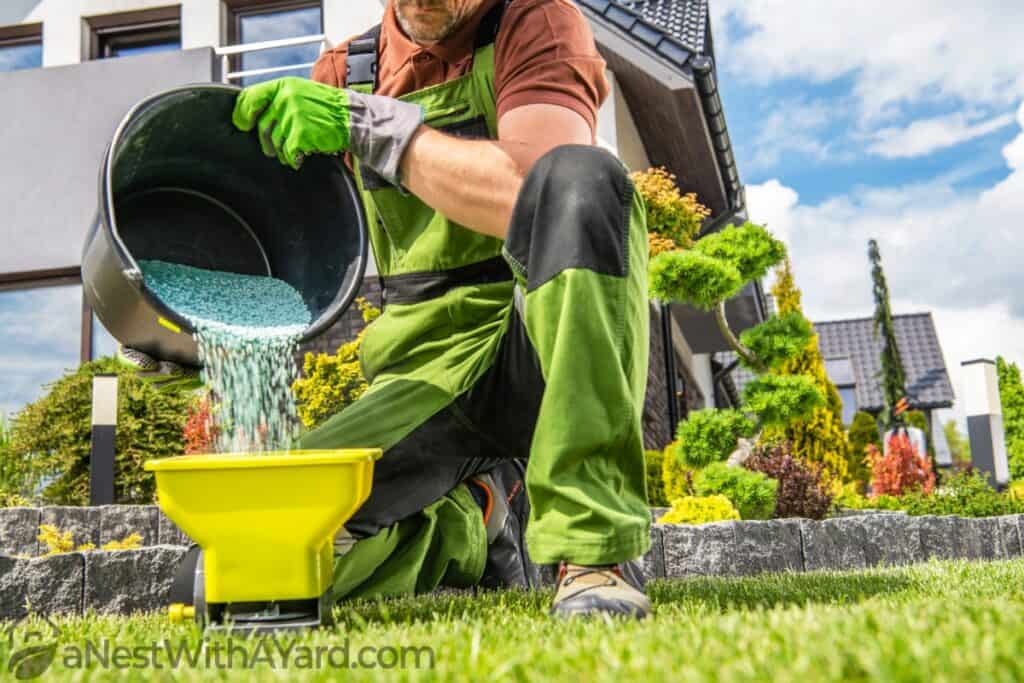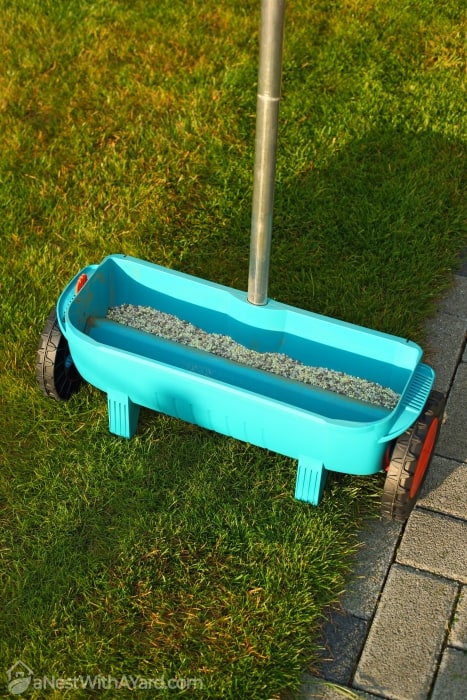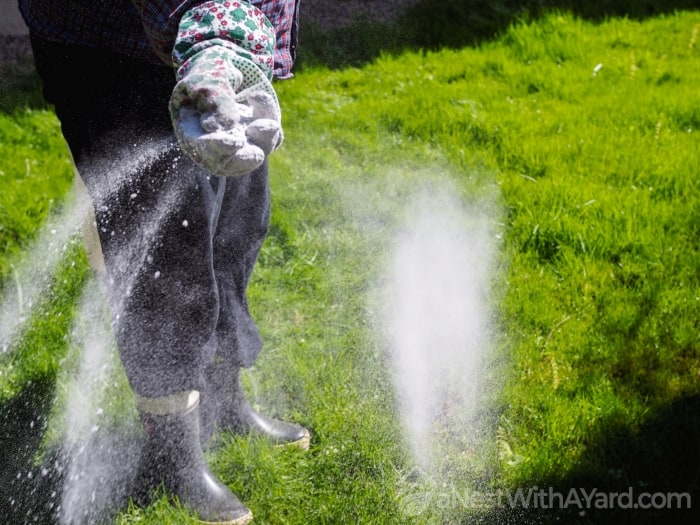The best time to fertilize lawn is when the ground is 55 degrees Fahrenheit. This is usually between the months of March and April, but this obviously depends on where you live. Fertilizing is best done a couple of days after the ground has received some moisture.
Think your lawn could do with some fertilizer but are not sure whether the time is right? This one’s for you! The last thing you need is to splurge on good quality fertilizer just for it to not be effective because of poor timing, or even worse, for it to cause harm to your lawn.
The question remains: should you fertilize before or after it has rained? The key to finding the best time is actually by checking the soil temperature.
If you’re a lawn care fanatic, keep reading for everything you need to know about when’s the best time to fertilize for a healthy, green lawn!
Should You Fertilize Before Or After Rain?

Rain is one of the most crucial factors that determine whether you have a poor or good-quality lawn. But the key to leveraging the benefits of rain is by understanding whether to apply fertilizer before or after it’s rained.
Fertilizing Before Rain
Fertilizing your lawn before it rains is quite literally a slippery slope. It essentially washes off the fertilizer from the grass blades, resulting in an ineffective fertilization process.
If you fertilize just before heavy rain, the excess moisture will push it deep down into the lower layers of the soil and won’t have a positive effect on the grass roots. If the product ends up going into the stormwater systems, it could end up polluting the water in your community.
Fertilizing After Rain
Fertilizing after it has rained can be quite beneficial to your lawn. If it rains at least a couple of days before you plan on fertilizing, your lawn will be moist and the grass will be healthy and receptive to the nutrients you’re about to add to it.
You just need to be careful not to add fertilizer immediately after it has rained. If you do, the fertilizer you apply will stick to the wet grass blades and damage them.
Check out this video by Colorado Springs Utilities for an in-depth explanation on when’s the best time to fertilize lawn:
The Verdict

As you can tell from the above, fertilizing before rain seems to be a major no-no. But the ideal time to fertilize your lawn is around 2 days after it has rained and at least 2 days before you’re due to receive rainfall again. This will ensure that your lawn is moist, in a healthy condition, and ready to receive the minerals and nutrients.
If you fertilize after it has rained, the top layers of your soil will most probably still be quite moist. This excess moisture will mix with the fertilizer and surround your grass roots.
How Often To Fertilize Lawn?

It’s ideal to fertilize lawns at least once or twice a year, but you can do it more often if you think your lawn needs it.
If you’re wondering when exactly you should be fertilizing your lawn, keep in mind that the ideal time is when your grass is growing the most. For cool season grasses, this will be late spring and fall. This is also when people tend to weed and feed. Warm season grasses should be fertilized in late winter and early spring.
How frequently you should apply lawn fertilizer isn’t a one-size-fits-all kind of situation. It depends on a couple of factors, such as:
- Your lawn care practices
- How healthy your lawn is
- The weather conditions
- How much rainfall your region receives
Another important factor to note is that applying too much fertilizer could actually damage your lawn. So, remember not to be heavy-handed and to apply fertilizer evenly to help you grow a healthy lawn.
Chances are that if you’re keeping a close eye on the progress of your lawn, you will also be wondering when would be the ideal time to mow it. Check out this article for everything you need to know about the best time to mow your lawn!
This video by YouTube user Exmark Manufacturing Inc. for more information on how to fertilize lawn:
Types Of Fertilizer

There are several different types of fertilizer on the market for you to choose from. Here’s a brief breakdown of the most popular:
Organic And Synthetic Fertilizer
The slow-release organic kind is made up of natural materials that have a more complete nutrient profile and are good for the environment.
Synthetic fertilizer contains a limited amount of nutrients but they’re able to release these nutrients much faster than organic fertilizer. This type of fertilizer isn’t very good for the environment.
Granular And Liquid Fertilizer
Granular fertilizer is recommended for most homeowners who don’t have much experience with applying fertilizer. When applying granular fertilizer, it’s easiest to use a spreader. You should also ensure that you water your lawn after every application.
Liquid fertilizer is a bit more difficult to apply if you’re not experienced. It needs to be applied with a hosepipe.
Looking for more fertilizer options? Check out the 20-20-20 fertilizer!
FAQs
Should You Fertilize Your Lawn Before It Rains?
You should not fertilize your lawn before it rains because the rain will wash away the fertilizer. If you live in a region with regular rain and are unable to find a good time to fertilize, the rain shouldn’t have much of a negative impact if it has rained lightly.
How Long Should Fertilizer Be Down Before It Rains?
Fertilizer should be down for at least 2 days before it rains. This will give it a chance to activate and soak into the soil before a downpour washes it away from where you applied it. Nevertheless, rain is needed for the fertilizer to get absorbed into the roots.
When Should I Apply 10-10-10 Fertilizer To My Lawn?
You should apply 10-10-10 fertilizer to your lawn at least twice in early spring and twice in the fall. The first spring application should be when new growth begins and the second 30 days later. In fall, you should apply it when growth slows down and then 30 days later.
Does Rain Affect Lawn Treatment?
Rain does affect lawn treatment. Rain will speed up the process of grass growth and weed control. However, in the case of lawn fertilizer specifically, rain can reduce its efficacy by washing it away or pushing it too far into the soil to positively impact grass roots.
What Happens If It Rains After Fertilizing?
If it rains after fertilizing, your fertilizer could be washed away or pushed into the soil. This depends on how much rain has been received. If there has only been light rain, the results won’t be affected. If there’s been heavy rain, it’s likely that the fertilizer won’t be effective.
Now You Know When’s The Best Time To Fertilize Lawn

Fertilizing lawn can be quite a hit-and-miss situation if it’s not done correctly, at the right time, or with the right tools and fertilizer.
Just remember that it’s ideal to add fertilizer after it has rained and in early spring for cool season grasses. If you stick to this time frame, you are guaranteed to end up with a luscious, green lawn at the end of the process.
I hope you found this article helpful. If you did, please feel free to leave me a comment below and share this with a friend!

